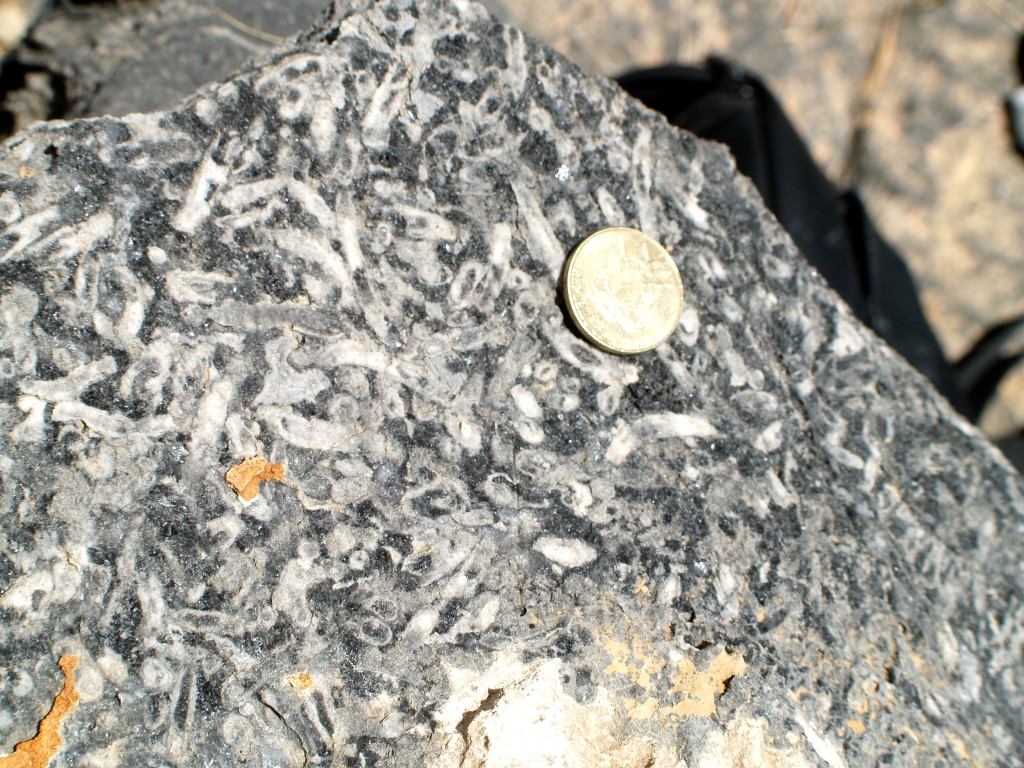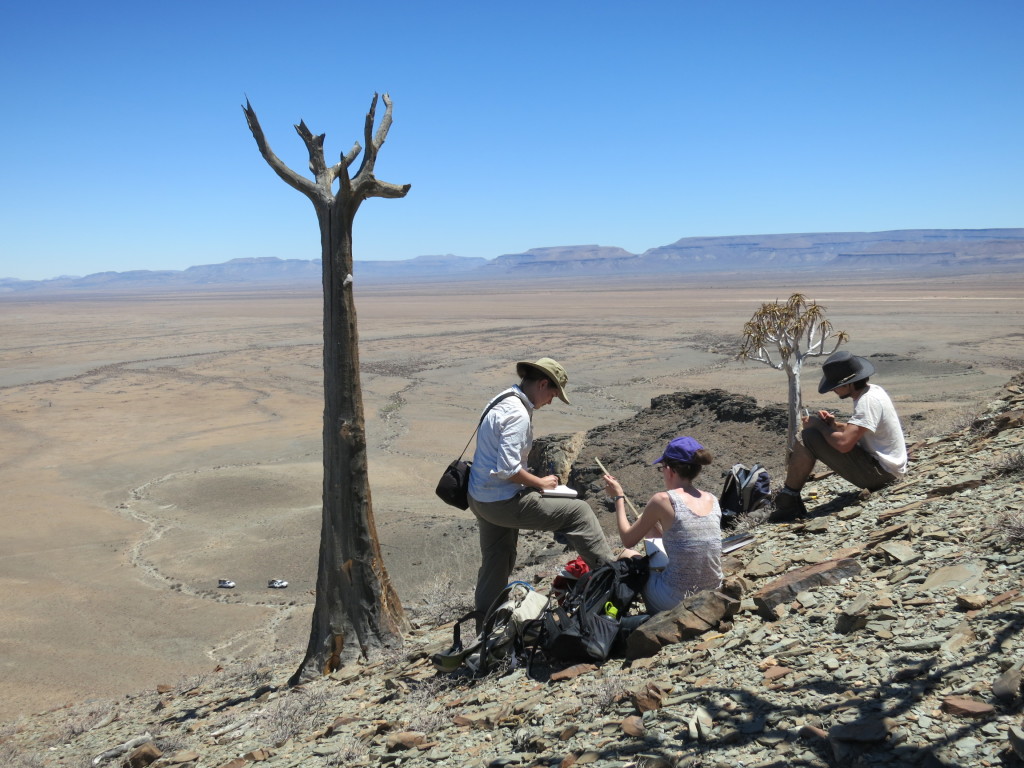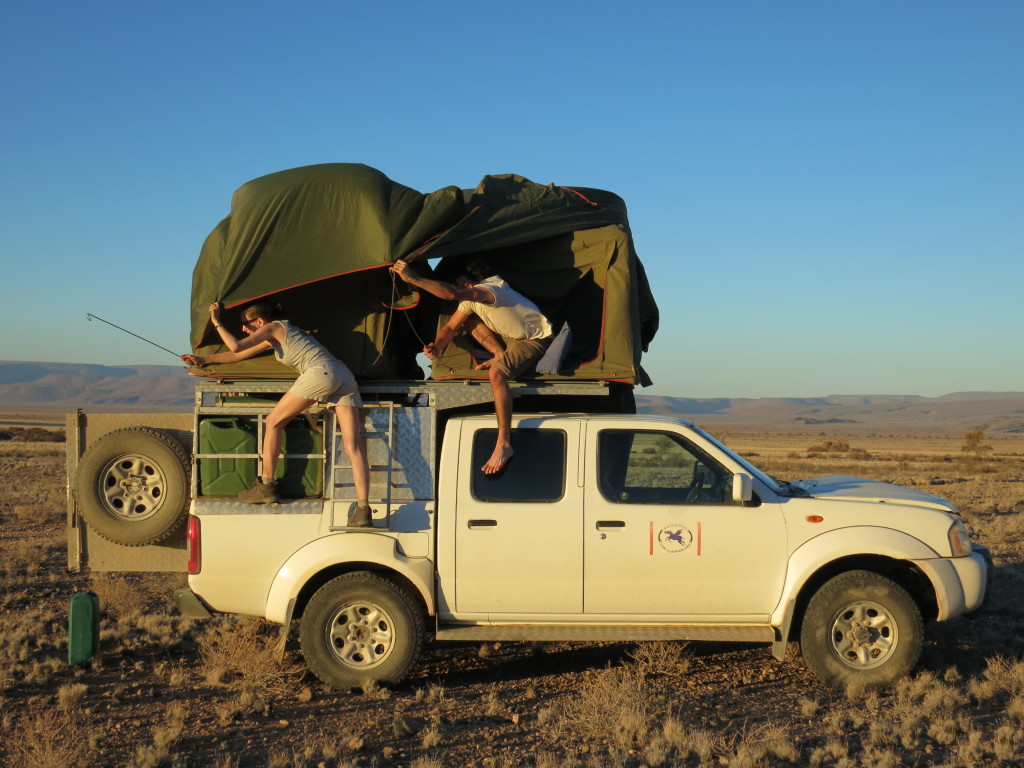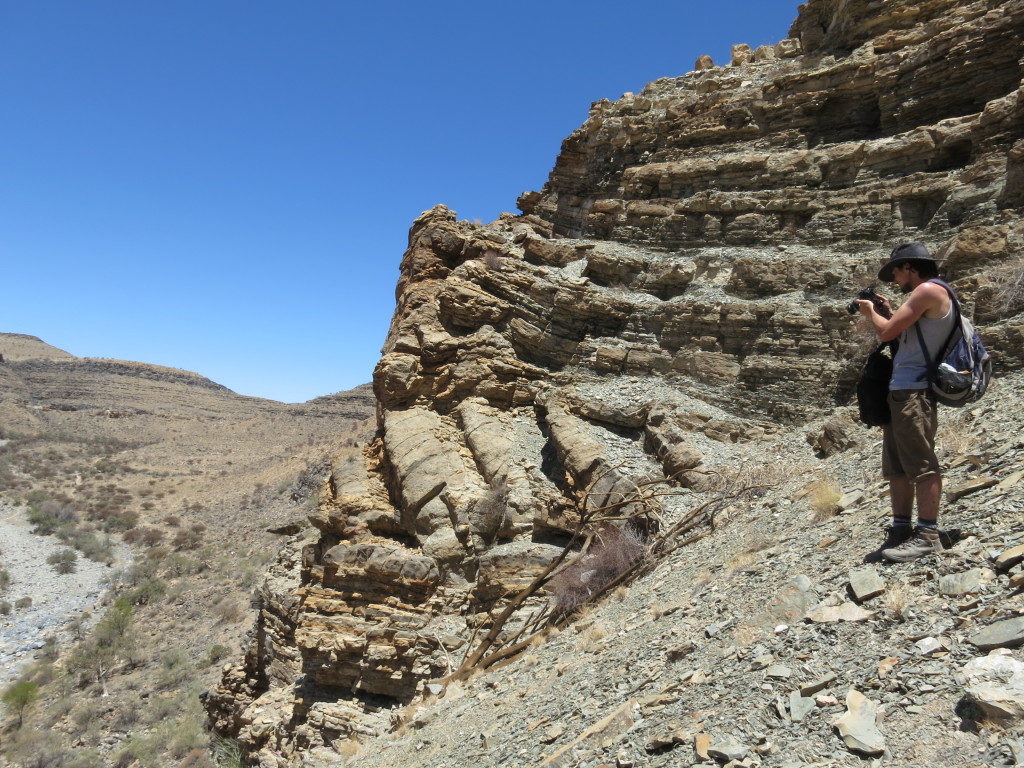Amelia Penny is a second-year PhD student at the University of Edinburgh’s School of GeoSciences. She is working on the palaeoecology of early calcified animals in the Nama Group, and redox conditions across the Precambrian-Cambrian boundary. She occasionally blogs at Life in Deep Time about geology, deep time and science in general.
The late Ediacaran Period was a funny time to be alive. Earth was recovering from a series of deep glaciations and ocean chemistry was wildly different to today’s, yet in those oceans the earliest animals were evolving. However, it wasn’t until the Cambrian that animals rapidly attained the diversity of life habits and body plans that we recognise today. So, what took animals so long, and once they did start to diversify, why did it happen so quickly?
My research group, led by Rachel Wood at the University of Edinburgh, is working on one possible explanation: Environmental oxygen. Most animals need oxygen, and geochemical proxies suggest that oxygen levels were generally low through much of the Ediacaran, only rising to present-day levels in the Cambrian. This has led to the idea that animals could only realise their evolutionary potential once oxygen levels had risen above a certain threshold, at which point they were suddenly free to diversify. To test this idea, we compare the occurrences of fossil animals with the redox conditions under which they lived, inferred from local redox proxies.
In particular, we work on the Nama Group in southern Namibia, a succession of marine sedimentary rocks laid down during the final 10 million years of the Ediacaran. It contains some of the earliest calcified animals, as well as an important assemblage of unmineralised organisms. One scorching day in December 2013, we were rolling out of the Namibian capital, Windhoek, in two white 4x4s crammed with 3 weeks’ supply of water, fuel, firewood, antelope steaks and South African wine, heads buzzing with ideas about life in the Ediacaran and many bloodcurdling warnings about leopards, snakes, and the dangers of driving into a kudu at speed.

Reef outcrop in the Upper Omkyk Member of the Nama Group, containing tubular white Cloudina hartmannae fossils. Cloudina is one of the earliest known animals to have built a calcified skeleton. Picture by Fred Bowyer.
On our first evening, we stopped to sample a massive microbial reef. We had time to wander slowly over the reef, noticing the microbial textures in the limestone – clotted thrombolites with a texture like cold porridge, and finely laminated stromatolites made by the microbes which once built the biggest reefs on Earth. We began to find the fossilised skeletons of some of the earliest calcified animals, white against the darker limestone matrix. These little animals don’t have much instant wow factor, but they were pioneers of skeleton-building by biomineralisation, a strategy which now provides animals with physical protection and support, weaponry and mineral storage, vastly increasing their arsenal of survival strategies.
It was an easy introduction to the work ahead. The next three weeks saw us bumping through dry river beds and scrambling up steep stacks of level Ediacaran strata like giant flights of stairs. Along with a growing collection of rock and fossil samples, we accumulated scratches from karst and thorns, deep suntans and a fine coating of desert dust. We sampled localities all over southern Namibia, spanning eight million years of Nama Group history and a range of different environmental settings. The resulting samples are now adding to our dataset for the Nama Group and are leading to a high-resolution picture of redox and palaeoecology in the Nama Basin.
Namibia is a vast and beautiful place for fieldwork, and we covered hundreds of kilometres of gravel roads, trailing bright clouds of dust behind us. Between stops, we watched ostriches wading through heat haze, feral horses scratching a tough living in acres of sand, roadside snakes in evening light, tame jackals, families of baboons, drought-stricken quiver trees, weaver bird nests hanging from telegraph poles, and the occasional other traveller in a pony cart or dust-coated car. We stopped at Kolmanskop, an abandoned diamond mining town half-buried by sand, and camped for a night at Luderitz, a coastal town where we watched flamingos flying in over the Atlantic and sipped our evening wine to the sound of a ship sifting diamonds from tons of desert sand.
We’ve been working on the rock samples we collected then for the past year or so, reconstructing redox conditions at our field sites and also revealing new details of the palaeoecology of the fossil animals of the Nama Group. Our work in Namibia continues, with more material and more samples helping to build a much more complete picture of this Ediacaran ecosystem, though there remains a huge amount to do. Ultimately, high-resolution work like this will refine our ideas about the links between environments and animal evolution in the run-up to the Phanerozoic, and allow us to understand the innovations that made the ocean ecosystems we recognise today.

Fred Bowyer, Rachel Wood, Rosalie Tostevin, me, and Andrew Curtis, back in Windhoek and ready to head home. Picture by Karl-Heinz Hoffmann.
![]() This work is licensed under a Creative Commons Attribution-NonCommercial-ShareAlike 4.0 International License.
This work is licensed under a Creative Commons Attribution-NonCommercial-ShareAlike 4.0 International License.



